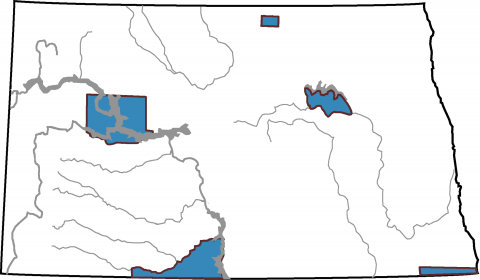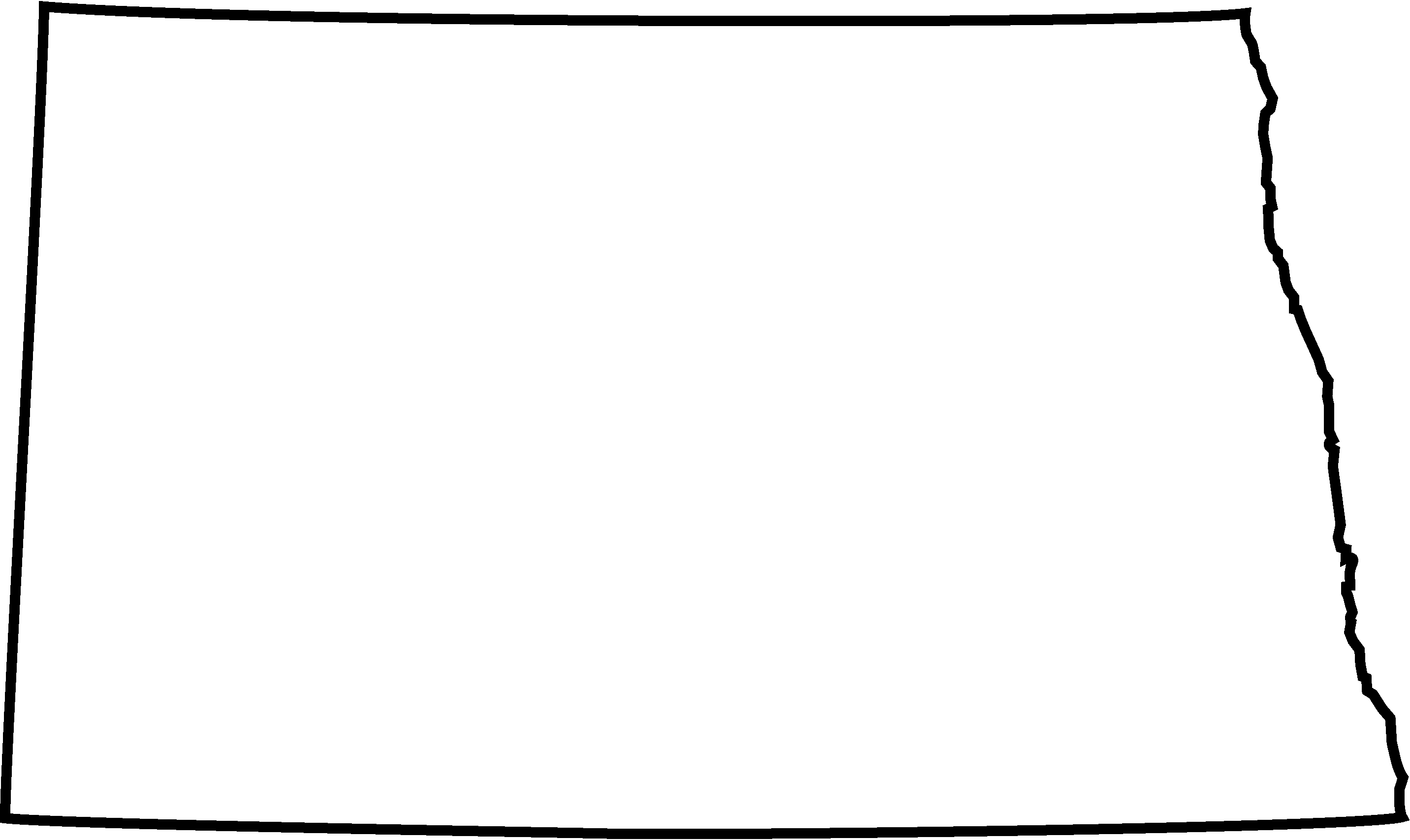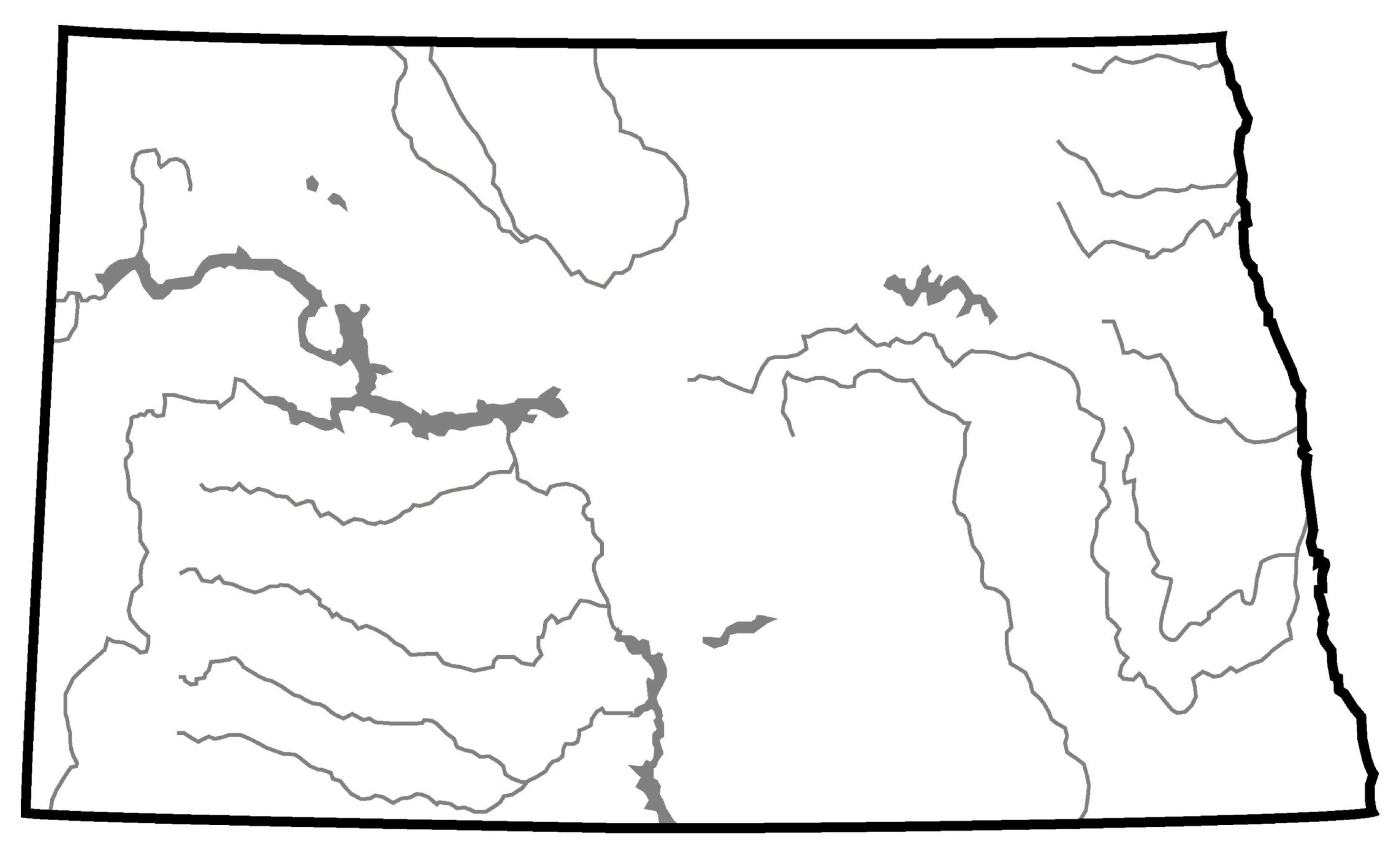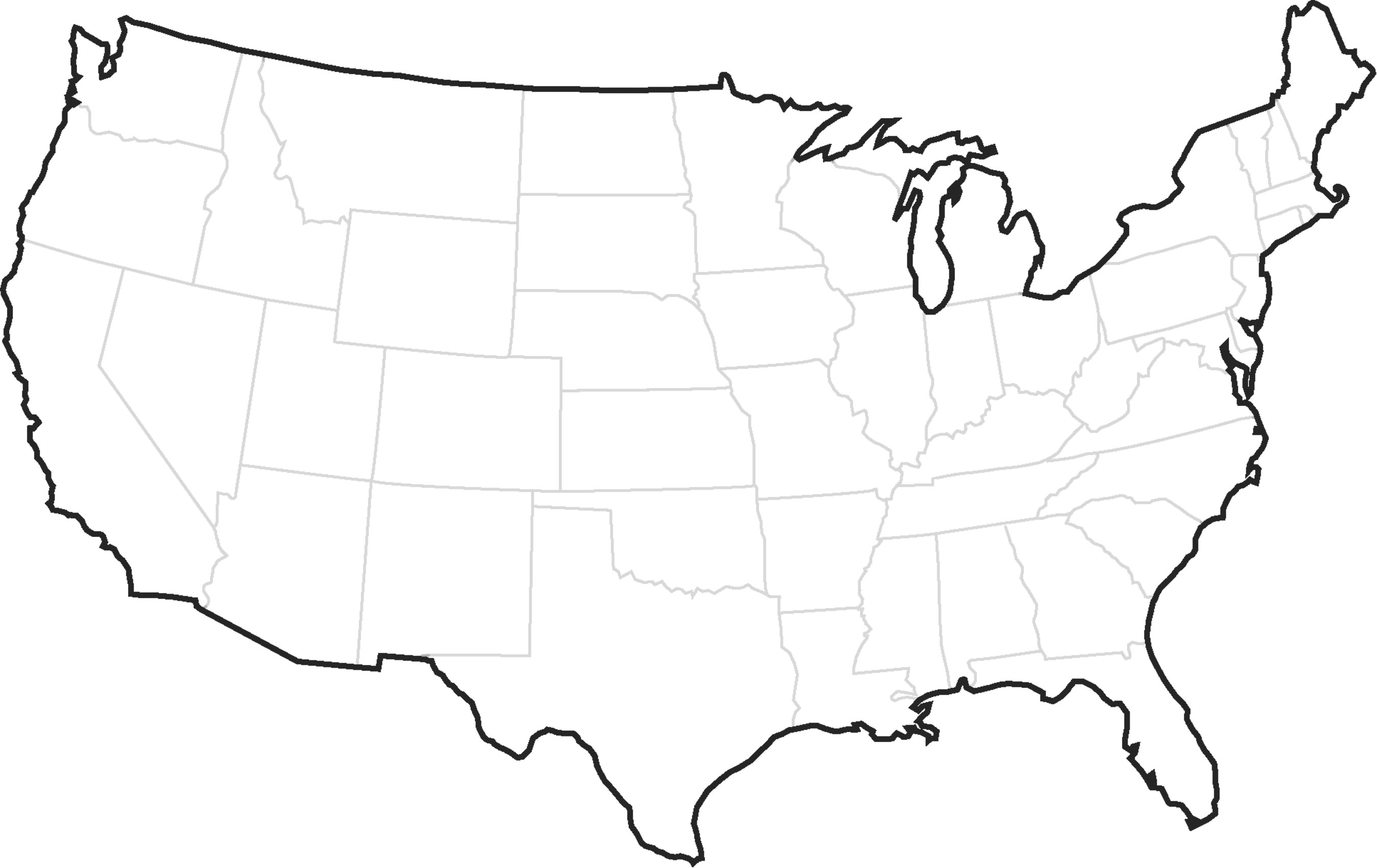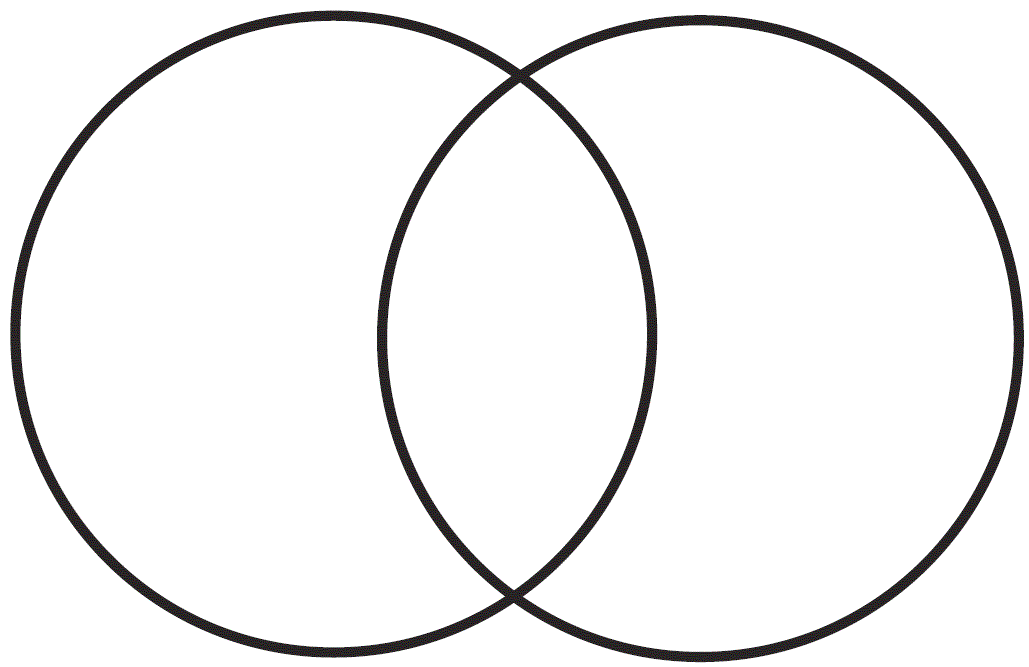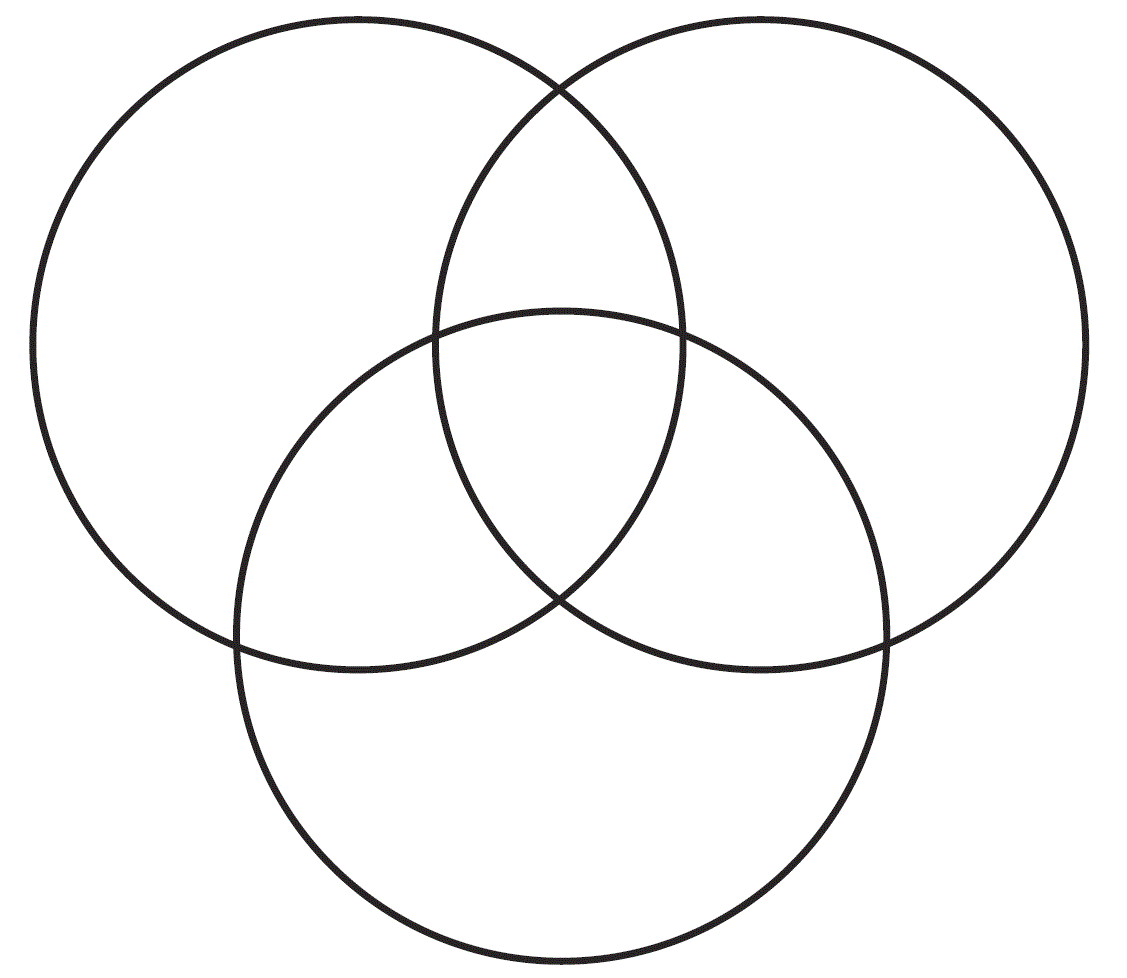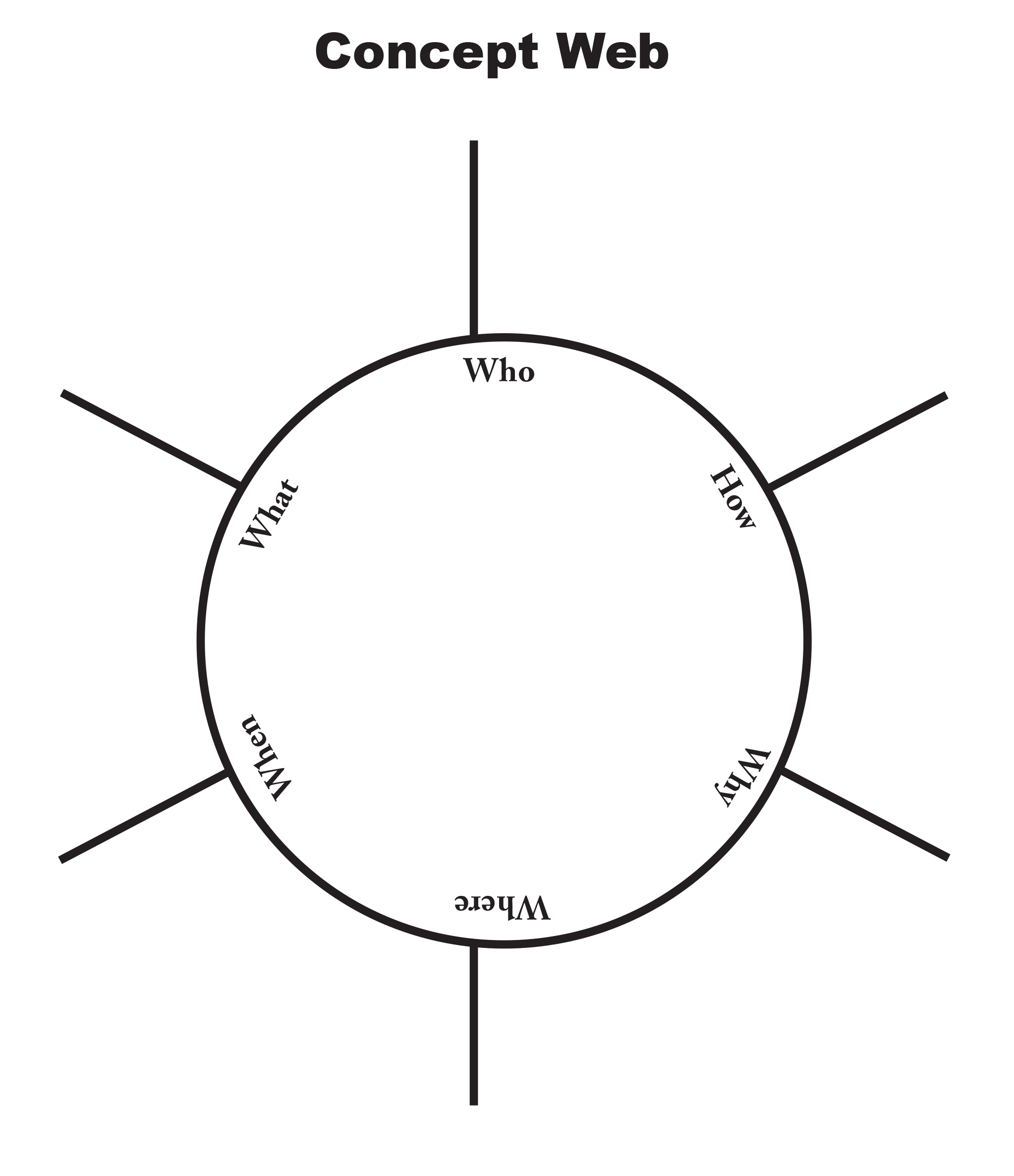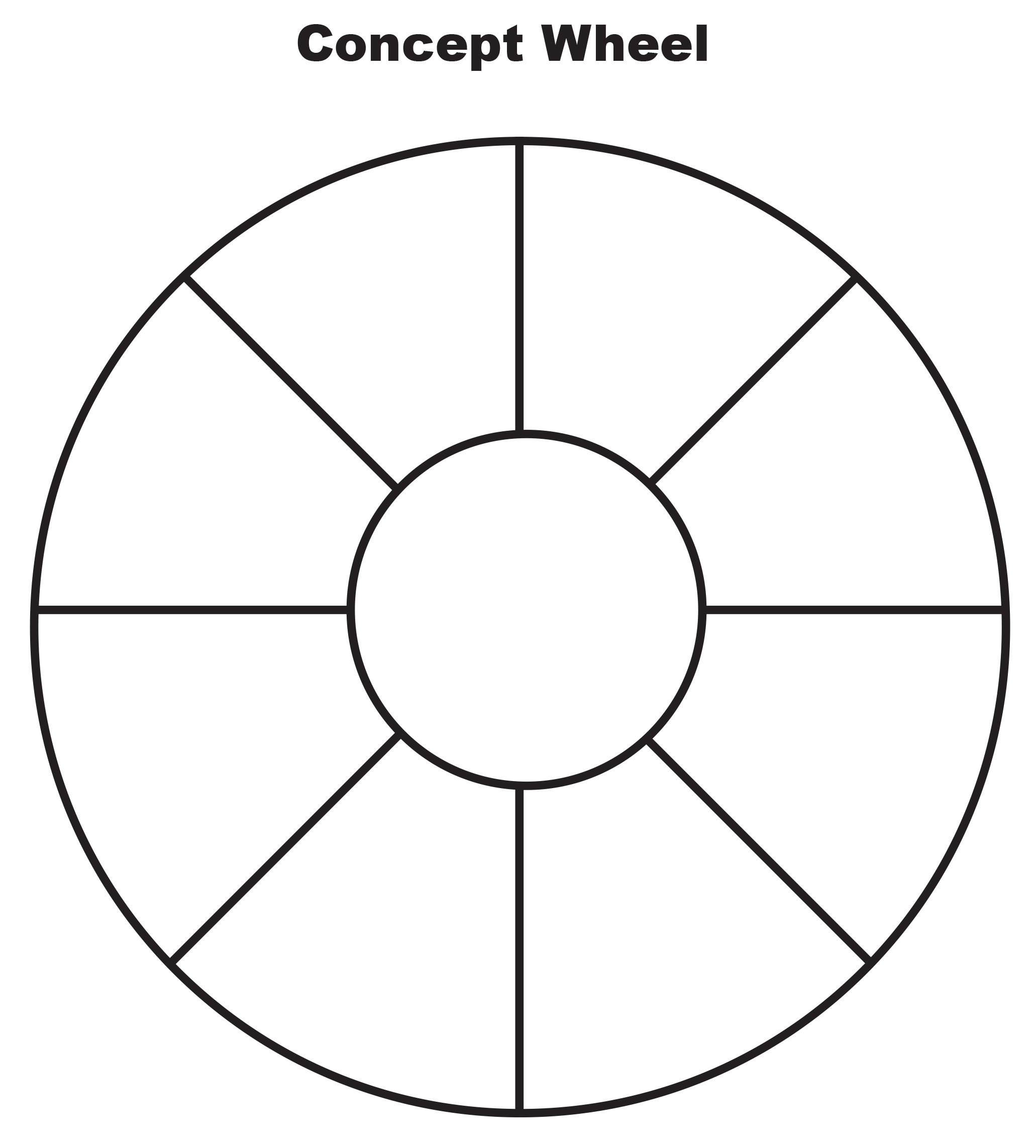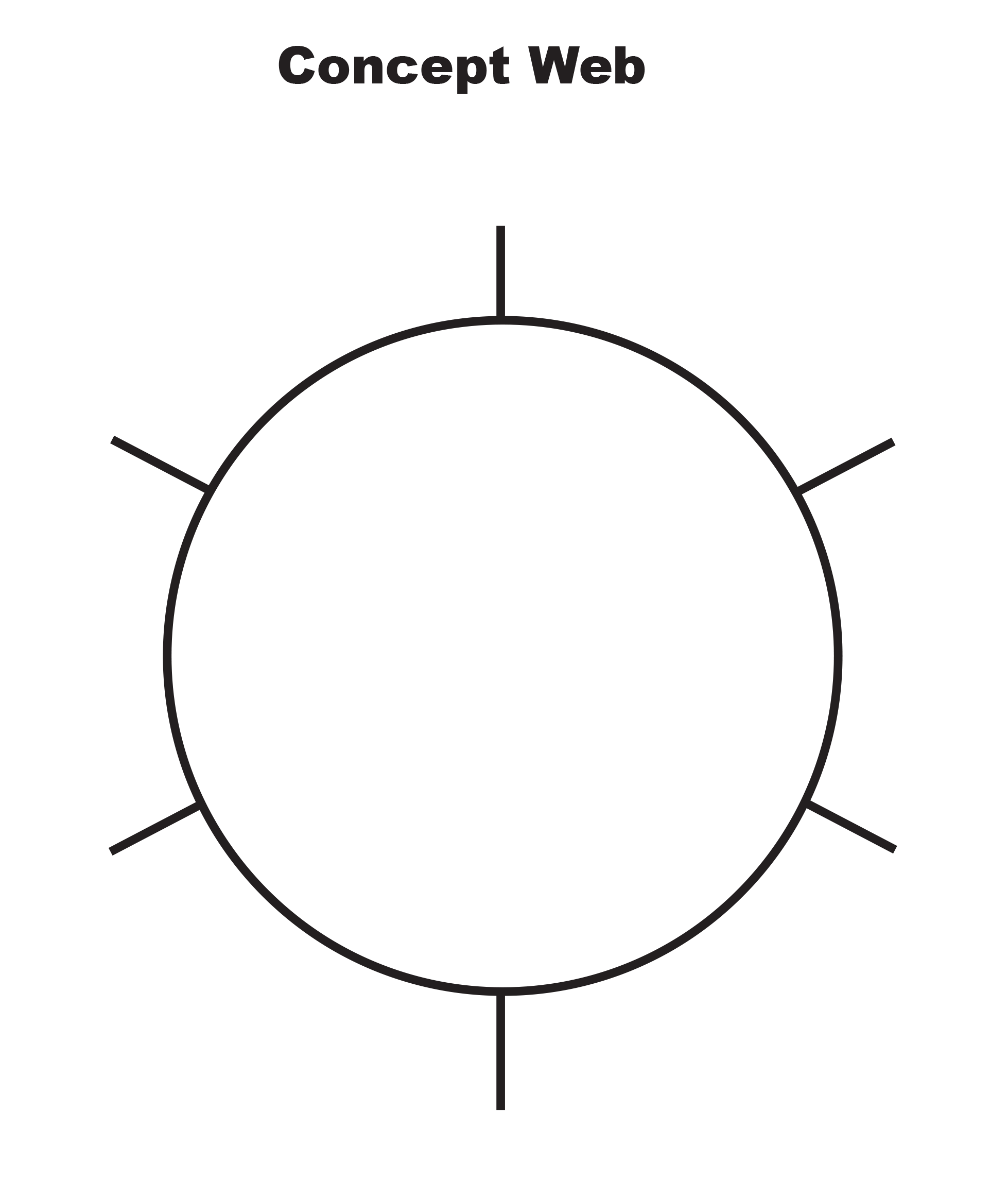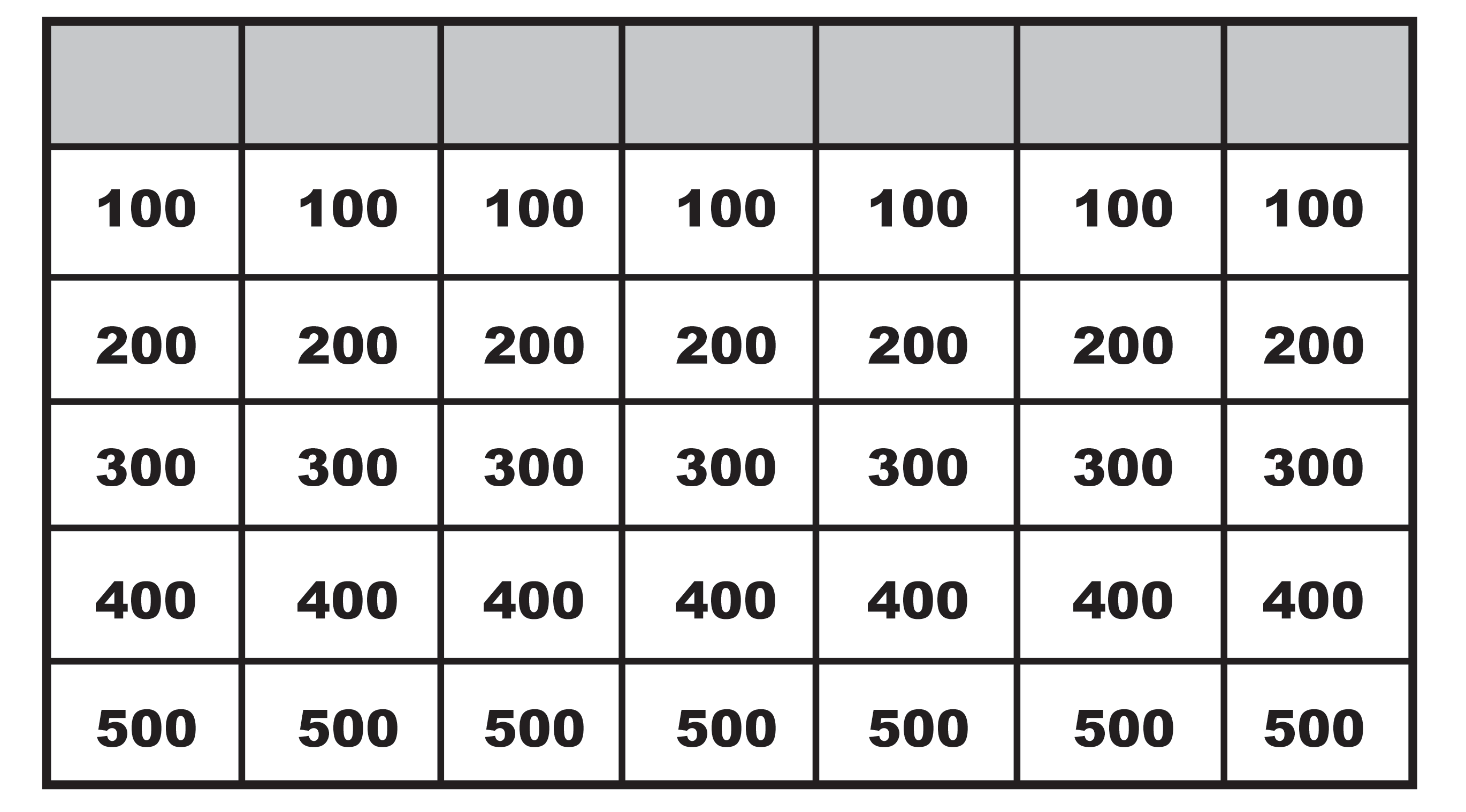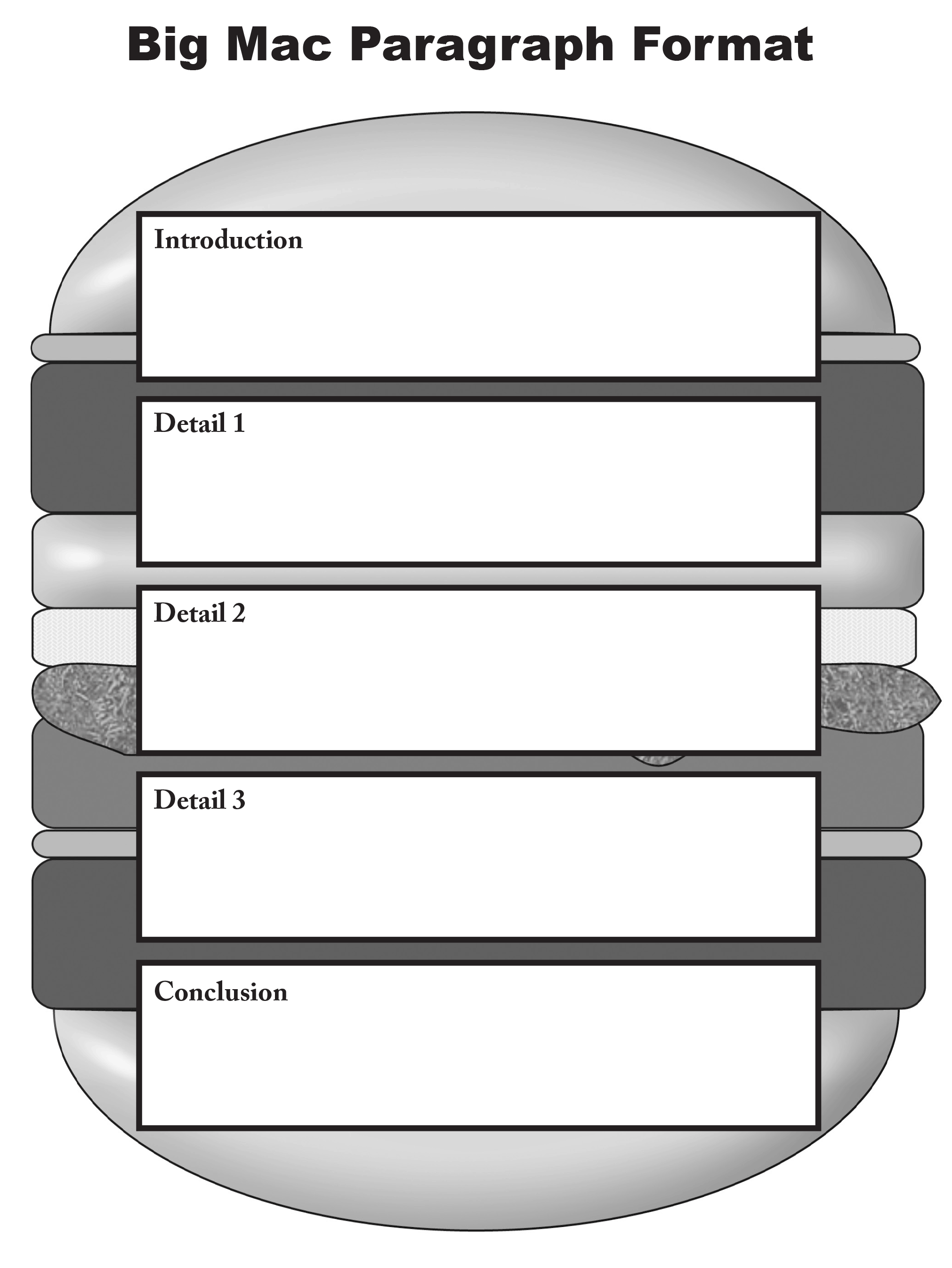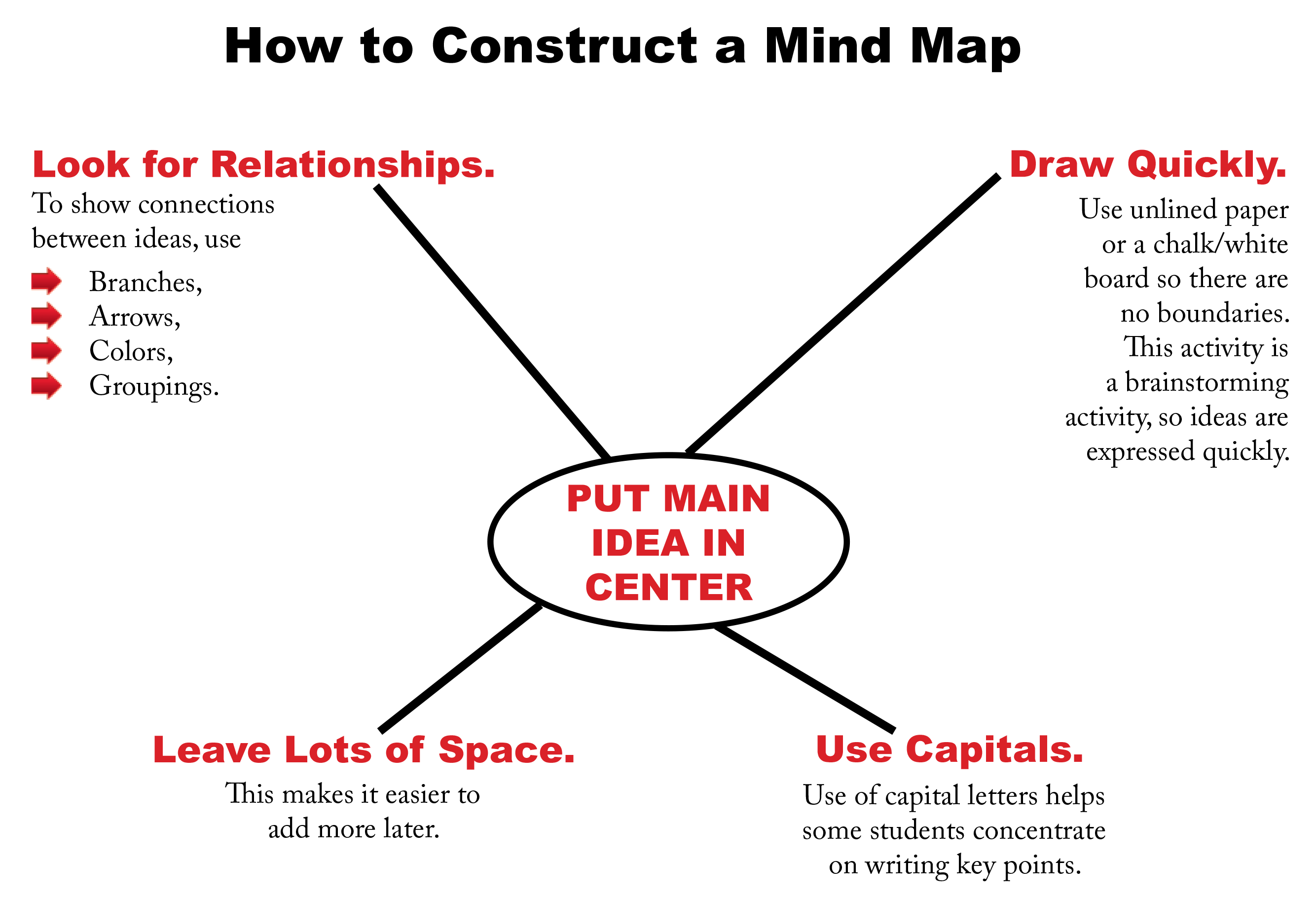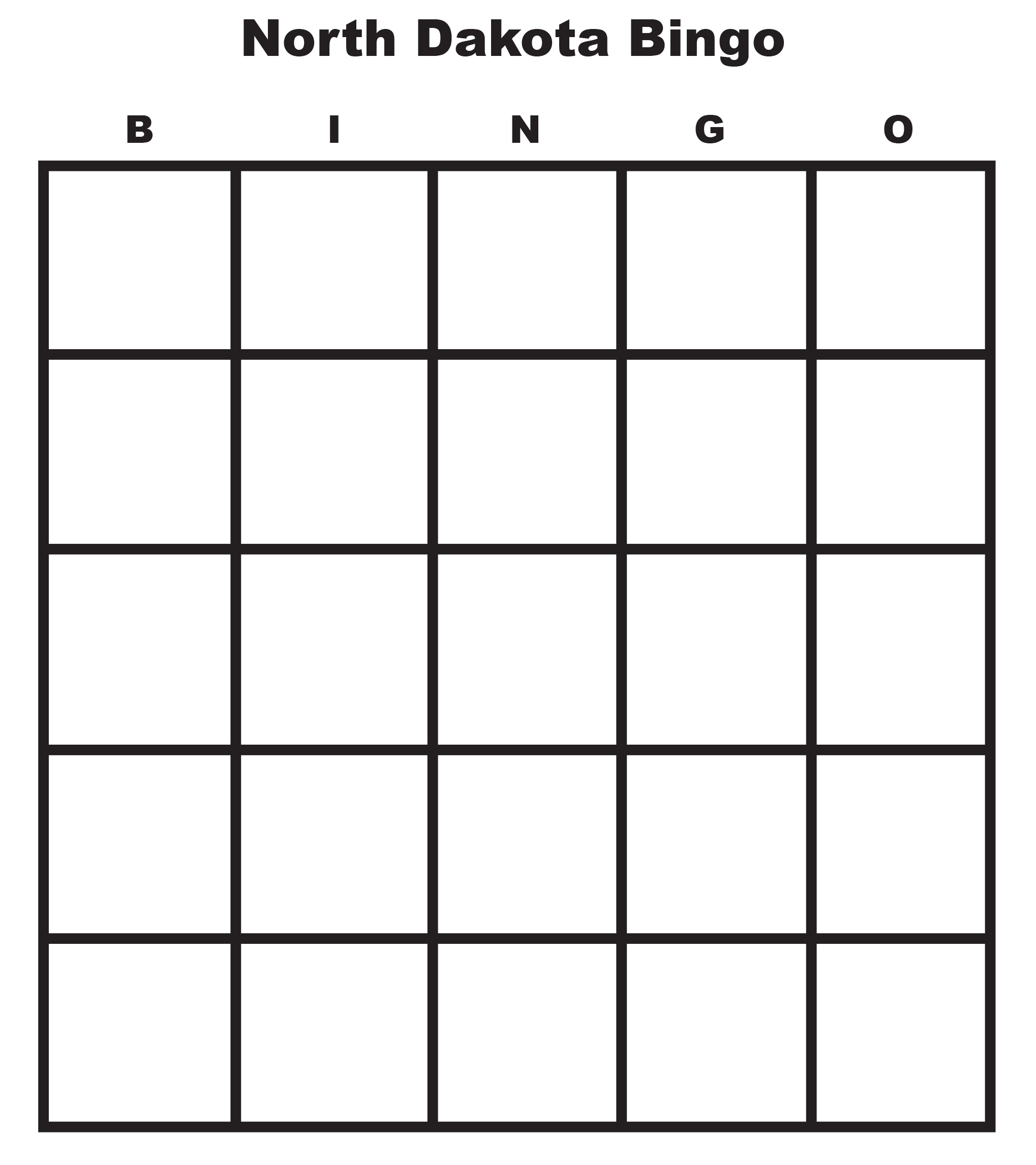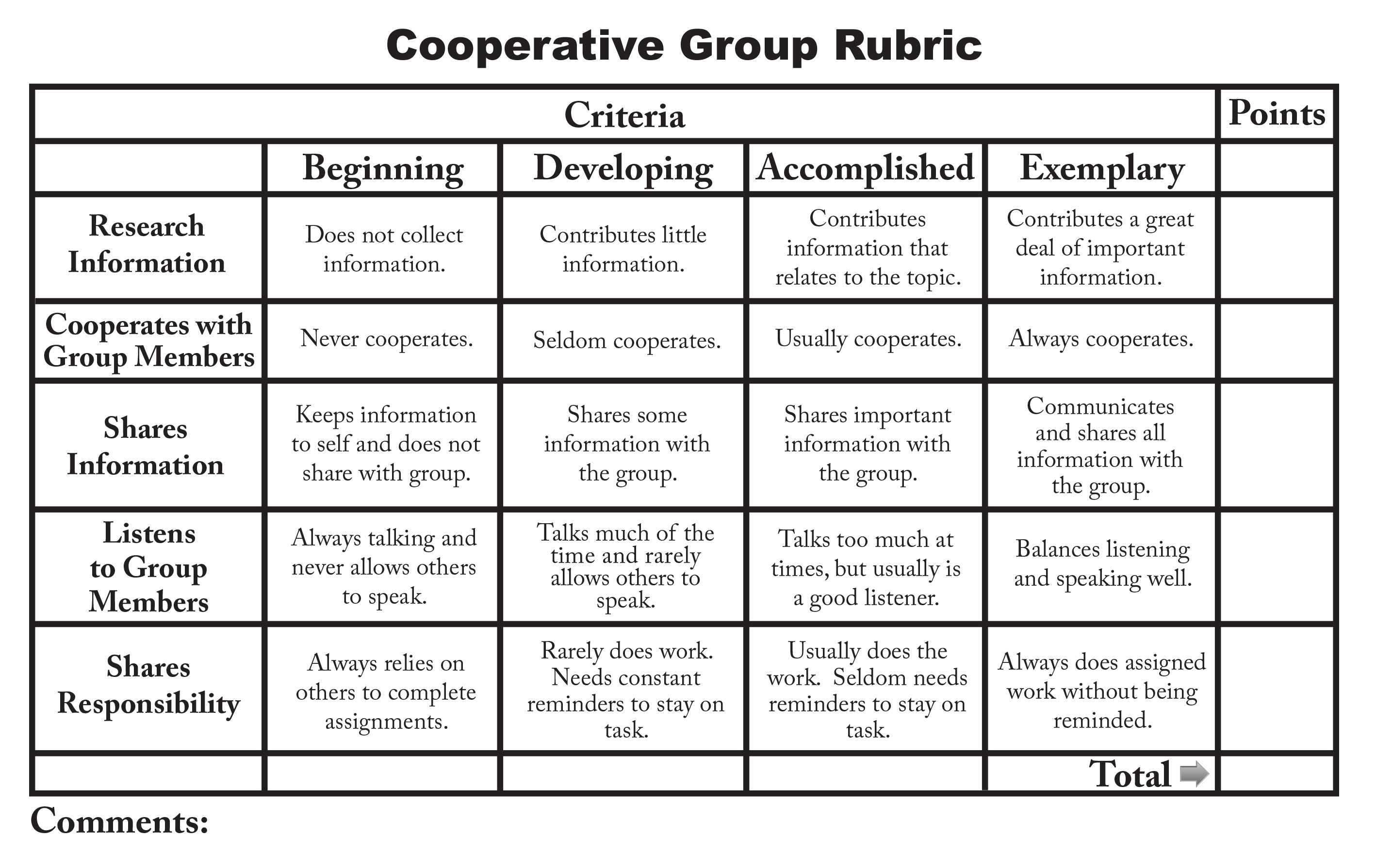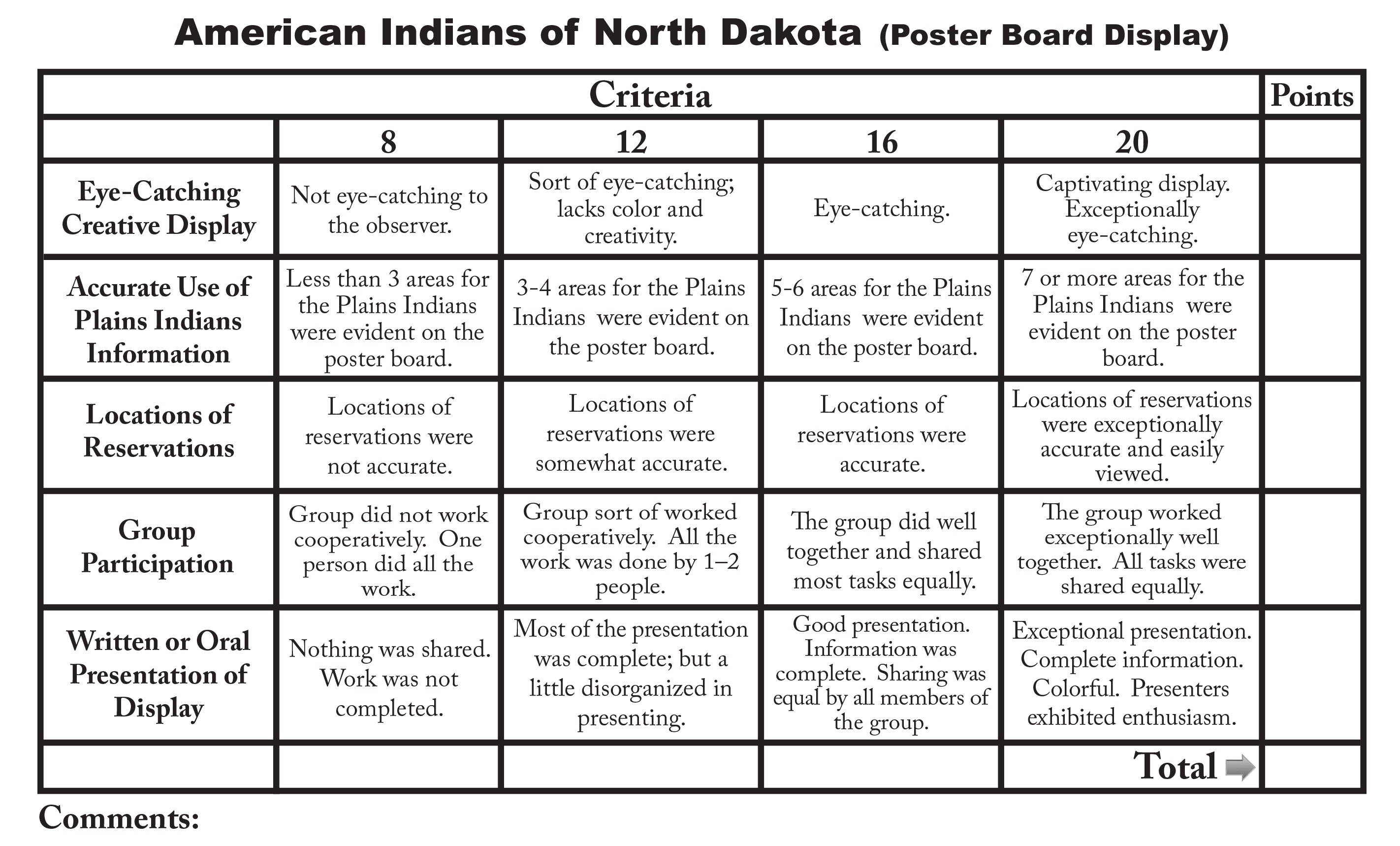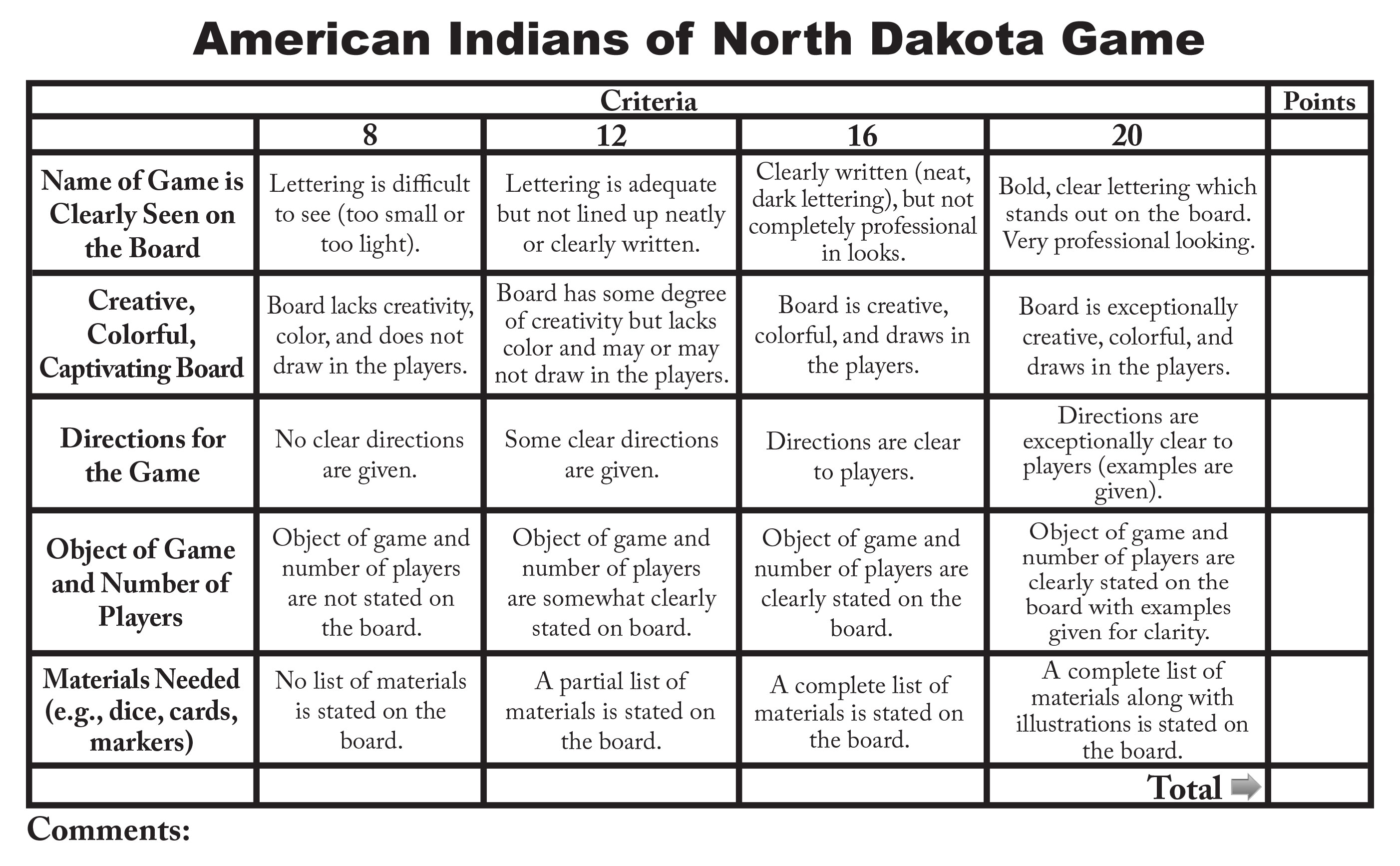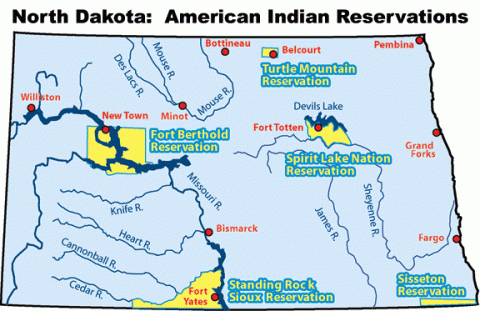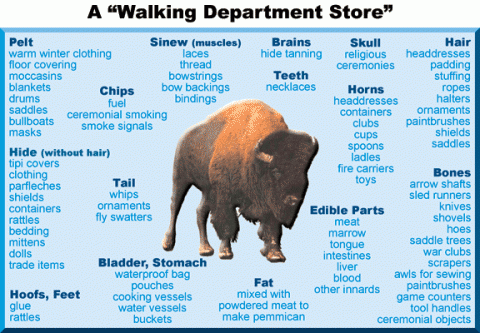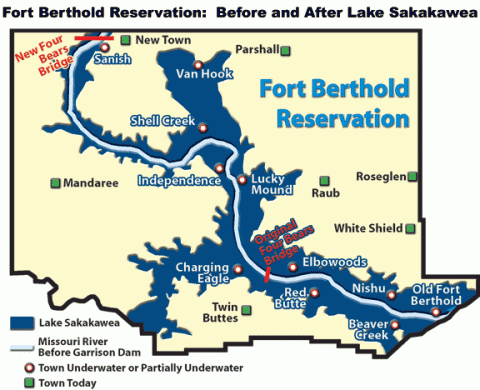Resources
Textbook
This 116-page unit presents the fascinating story of the American Indians of North Dakota. Students study the history and culture of the Mandan, Hidatsa, Arikara, Chippewa, and the Great Sioux Nation.
Teacher Resource Guide
The purpose of this Teacher Resource Guide is to assist the teacher in teaching about the American Indians of North Dakota. It is intended to be interdisciplinary and to act as a guide to supplement other activities that may be used in the classroom.
American Indians Games
This following games that can be played in the classroom or on the playground. The challenge to each student is to research and play more American Indian games, particularly ones played by the American Indians of North Dakota! Ideas include:
- Have students research additional games Plains Indians played.
- Have students teach a game to the entire class.
- Have students create the game pieces for an Indian game, explain the game to a partner or a small group, and then play the game with them. Change groups and play it again with a new partner or small group.
- Have students use a two-circle Venn Diagram to compare and contrast games played today by many children with those played by American Indians of North Dakota in the 1800s.
- Two-Circle Venn
American Indian Games PDF
Culture of the American Indians of North Dakota
A large selection of American Indian games can be found at the Manataka American Indian Council.
Have students play these games using questions from the text: BINGO, Jeopardy, Wheel of Fortune, Trivial Pursuit, etc. (The following site is a wonderful site with templates, directions, and examples of Jeopardy, Who Wants To Be A Millionaire, or Hollywood Squares using PowerPoint.) Suggested categories for the games: Early People of North Dakota; Plains Indian Dwellings; Symbols of the American Indians; History of the Tribes of North Dakota; Culture of the Plains Indians; and/or Profiles of Famous American Indians of North Dakota.
Play American Indians of North Dakota Bingo. Have students fill in the blank boxes with American Indian vocabulary words. Have a list of words created along with the definitions, and cut them into small pieces. The caller will select a card, read the definition, and the students will place a marker on the word that matches the definition. When BINGO is called, the student must read the words and give the definitions before it is counted.
Note: This may be used as an assessment tool.
Have students create a Plains Indian board game (link below) using the North Dakota American Indian questions provided. Concentrate primarily on the major tribes of North Dakota.
Bartering
In small groups, have students create a bartering or trading activity to share with other groups in the classroom.
Have students select several objects found in the home or classroom, or find pictures/illustrations to use for trading or bartering with others in the class.
Have the students give each object a value or determine what each item is worth (e.g., one pencil can be traded for two paper clips, a manila folder can be traded for three pencils).
Have the students begin trading the objects with other groups for something they feel is worth the trade.
Answer or discuss in class the following questions after the bartering activity is completed:
- Did you find this an easy way to get the things you wanted? Explain.
- Did everyone you bartered with think your values were what you thought they should be? Explain what you did if there was not an agreement on the value of an item.
- What happened when others wanted to trade more than one object at a time, and you did not have items that they thought were of equal value?
- What are the strengths and weaknesses of our monetary system (i.e., a dollar or cents value is given to an item)?
- If you were given the power to change our monetary system, how would you change it, or would you leave it the same? Explain your choice.
Concept Web
Have students use a Concept Web (links below) to study the tribes of North Dakota and to write characteristics of each tribe in one Concept Web. This activity could be assigned to a small group of students, then each member of the group would become the expert of one tribe. When finished, each member would share the information gathered with the other members of the group. To assess group participation and cooperation, use the Cooperative Group Rubric (link below).
Extension: After placing information on a Concept Web, have the students transfer their information from the Concept Web to either a written narrative or a poem.
Concept Web Materials:
Debate
Have students debate the following:
- Pros and cons of building the Garrison Dam and Lake Sakakawea and its effect on the Indian culture.
- Pros and cons of trading with the Euro-Americans.
- Pros and cons of sending Indian children to boarding schools.
For information on debating checkout the Formal Debate Guidelines
Drawing
In small groups or individually, have students draw a bison on either a bulletin board or on a large sheet of paper (newsprint or paper on a roll would be larger and easier to use). Label each part of the bison and tell how each part was used by the Plains Indians.
Glossary Activity
Have students create a Plains Indian Glossary with illustrations and definitions that younger children in lower grades can understand. Share this with the younger children or place it in the school library for use by other students.
History Box
Have students create a “history box” of one of the North Dakota tribes. Include their history, clothing, food, customs, etc. Share with the class.
Journal Ideas
Four values that were significant to the Plains Indians were honesty, generosity, bravery, and respect for elders and children. Have students write which value would be the most important to them and why. Another idea would be to rank the four values in order of importance and explain reasons for their choices.
Have students write about why they think the drum is considered a sacred and important instrument to the Native American culture.
When the Garrison Dam was constructed and Lake Sakakawea was formed, Elbowoods and other towns on the Ft. Berthold Reservation were flooded. Have students put themselves in the places of the people in these towns who lost their homes, businesses, schools, and the places where they grew up. How would they feel? How would they react? What would they want done to try to make up for their losses?
Map Skills
Have students use a North Dakota map to indicate the location of each of the Indian reservations of North Dakota.
Have students use a map of the United States to trace the migratory path of the Paleo-Indians, Archaic People, Woodland People, and the Plains Village People. Use different colors for each group. Create a legend so the reader can tell where each group began and where they migrated.
Have students use a map of the United States to draw the area where the Plains Indians roamed and lived. Indicate which present-day states and provinces were covered by their presence.
Symbolic Activities
In small groups or individually, have students draw a bison on either a bulletin The following are suggested ideas for teaching about the Medicine Wheel:
Have students brainstorm in small groups while sitting in a circle what things on Earth are in a circle (e.g., tree trunks, stems, moon, sun). Have one group at a time share one item they listed and make a list for the students to see. Continue adding to the list until all items have been listed. Discuss the significance of the circle, and then have the students write what they learned about the circle and its significance for everyone and everything on Earth
Discuss the following statement in class: “Time is a great circle; there is no beginning, no end. All return again and again, forever.”
Hold a class meeting where everyone is seated around the classroom in a circle. Discuss how the class could work and play in harmony as the Plains Indians tried to do in their daily living.
OPTIONAL: Explain to your students “tipi etiquette” and incorporate it into your class meeting. For more information on Culture of American Indians of North Dakta: Homes
- Useful Symbolic Activity
- Medicine Wheel (Single Line)
- Medicine Wheel (Double Line)
- Medicine Wheel Explanation
Model/Diorama
Have students create a model (e.g., diorama) showing the three major dwellings of the Plains Indians of North Dakota (tipi, earthlodge, wigwam).
Mural
Have small groups of students create a mural/montage of the American Indian cultures in North Dakota using images taken from various sources (magazines, brochures, the Internet, etc.).
Music
Have students listen to several American Indian songs concentrating on the drum beat and the use of other instruments such as the flute. Ask them to listen to the heartbeat of the drum. Ask the students what instruments they have created or could create from things in nature? Then, have the students create one of their own.
Painting
Notice the paintings by Martin Pate located in the American Indians of North Dakota. Have each student study one of the paintings and write as many things as he/she sees in the painting. Using a Venn Diagram, compare the similarities and differences of the people in the painting with the people of today. Discuss in class.
Poetry
Have students create poetry corresponding to the North Dakota Studies unit they are studying:
Couplets (two-line stanza that rhymes).
Triplets (three-line poems). A triplet may be written in the shape of a triangle and can be read by starting at any corner.
- Patterns include ABB (two of the lines rhyme)
- AAA (all three lines rhyme)
- ABC (no lines rhyme)
Haiku
- Line 1—five syllables
- Line 2—seven syllables
- Line 3—five syllables
Cinquain
- Line 1—one word (title)
- Line 2—two words (describe the title)
- Line 3—three words (describe an action)
- Line 4—four words (describe a feeling)
- Line 5—one word (refer back to the title)
Diamanté (Diamond)
- Line 1—one noun (subject #1)
- Line 2—two adjectives (describing subject #1)
- Line 3—three participles (ending in –ing, telling about subject)
- Line 4—four nouns (first two related to subject #1, second two related to subject #2)
- Line 5—three participles (about subject #2)
- Line 6—two adjectives (describing subject #2)
- Line 7—one noun (subject #2)
ABC Poetry (Start with A and go through the alphabet writing a word for each letter. You may make several sentences, but the information should be about North Dakota.)
Acrostic Poems (The first letters of the line spell out a word that has something to do with the poem.)
Lanterns (Japanese poem that is written in the shape of a Japanese lantern).
- Line 1—one syllable
- Line 2—two syllables
- Line 3—three syllables
- Line 4—four syllables
- Line 5—one syllable
Poster Board Display
Using a large piece of tagboard, have students create a poster board display demonstrating their knowledge of the tribes of North Dakota according to the reservation location (e.g., dwellings, customs, clothing, food, festivals, spirituality, games, etc.).
PowerPoint/iMovie
Have groups of students create a PowerPoint or iMovie slide show on any segment of the Plains Indian culture.
Powwows
Think, Pair, Share Activity on powwows. This technique may be used for any topic.
Reading books on the topic, or attending a powwow, have each student think of and write down some of the times he/she has gotten together to have fun and celebrate with family, friends, and others (i.e., birthdays, Christmas parties, family reunions). The student will then share thoughts with a partner.
Share ideas by writing them down on a board or poster paper for the entire class to see.
Discuss some of the purposes or activities that all festivals or celebrations have in common (e.g., fun, feasting, dancing, singing, storytelling). By remembering these events, the students’ awareness of their family’s beliefs, customs, and traditions will be revealed.
View a powwow and have the students concentrate on the various types of dances, the regalia worn, the music played, and the other types of activities observed.
Use a two-circle Venn Diagram to compare and contrast an Indian powwow with a celebration chosen by each student.
Quillwork/Beadwork
Designs, color choices, and arrangement of patterns were used by the Plains Indians to distinguish themselves from other tribes. Glass beads replaced quills after trading with the white man was introduced. Dakota people used a lot of red horizontal lines; Yanktonai Dakota people favored more floral and geometric patterns; the Sisseton and Santee Dakota preferred mainly floral patterns. Yellow was a favorite color used in Mandan, Hidatsa, and Arikara quillwork.
- Soak rice in different colors of food coloring for several hours.
- Dry thoroughly.
- Have students conduct research and draw or copy a design used by one of the North Dakota tribes.
- Have students glue the rice on a heavy piece of paper to replicate quillwork or beadwork done by the various tribes of North Dakota.
- Have students label what tribe used the chosen design and its significance, if known.
Small Groups
Have small groups of students research a section of Early People (i.e., Paleo-Indians, Archaic People, Woodland People, Plains Nomadic People, Plains Village People) and present their findings to the class in a format of their choice.
Have small groups of students graphically demonstrate their knowledge of the major American Indian tribes of North Dakota (Three Affiliated Tribes, Spirit Lake Nation, Standing Rock Sioux, Sisseton-Wahpeton, or Turtle Mountain Band of Chippewa) through the use of either the Concept Wheel or a Mind Map.
small groups of students graphically demonstrate their knowledge of the major Indian reservations of North Dakota (i.e., Fort Berthold, Spirit Lake Nation, Standing Rock Sioux, and Turtle Mountain) through the use of either the Concept Wheel, a Mind Map, and/or a North Dakota map.
small groups of students graphically demonstrate their knowledge of the major Indian reservations of North Dakota (i.e., Fort Berthold, Spirit Lake Nation, Standing Rock Sioux, and Turtle Mountain) through the use of either the Concept Wheel, a Mind Map, and/or a North Dakota map.
Tipi
Culture of the American Indians
Homes
Families
Tipi comes from two words: “ti” means to dwell and “pi” means used for. The number of poles for a tipi varied, although the average was about fifteen. These poles were around twenty feet long and weighed fifteen to twenty pounds. Tipis were set up in a “C” shape with the opening facing east.
- Have students take fifteen straws and tie them together so they stand up in a cone shape. Have them describe what happens.
- Then, have students take three or four straws and tie them together so they stand up in a cone shape.
- Have them describe what happens. Have the students discuss the following question: Which way was easier? Have them explain their choices.
Venn Diagram
Have the students use the three-circle Venn Diagram to list the similarities and differences of the three main types of Indian dwellings of North Dakota (tipi, earthlodge, wigwam) or of the Three Affiliated Tribes (Mandan, Hidatsa, Arikara).
Use a two-circle Venn Diagram to compare and contrast the Woodlands Indians and the Plains Indians.
Vocabulary
American Indians of North Dakota
Part 1: Vocabulary list
Part 2: Vocabulary list
Part 3: Vocabulary list
Part 4: Vocabulary list
Part 5: Vocabulary list
The vocabulary cards in the Teacher Resource Guide may be enlarged or reprinted on card stock. Laminating the vocabulary cards will make them more durable and long-lasting. Additional vocabulary can be found in the Student Text. These words may be used for reviewing (e.g., Trivia, Jeopardy, or a student-created game board, poster board, etc.). The sky is the limit for the uses of these words! Several suggestions follow.
- Create word games, word searches, mazes, crack the code, etc.
Winter Count
Have students create their own Winter Count using symbols found at the following sites:
- Grade 4: Winter Counts
- Grade 8: Winter Counts
Materials Needed:
- Brown grocery bag (only half of a bag is needed)
- Brown and black tempera paint (optional)
- Bucket or sink of water
- Permanent sharpie black pen
Directions:
- Cut a brown paper bag on the seam and cut out the bottom.
- Cut it in half.
- Crumple the bag; dip it in water; squeeze; remove from water; uncrumple; and repeat twice.
- Carefully tear out an outline of an animal shape keeping in mind the four legs, the tail, and a neck. (Teachers: show pictures of hides or an example of one.) Optional: Mix a little black paint with the brown and paint it on one side of the hide while it is still wet.
- When the skin is dry, “write” your own Winter Count using symbols found on the sites listed above or from a hard copy. Practice your story first on scrap paper.
- Write your story on the skin in pencil. The story should begin in the center and follow a circular pattern. Then, with a permanent black marker, trace over your pencil drawings.
- Have the students tell their story to others by pointing to the symbols on their skins.
Words of Wisdom
Have the students work with a partner or in a small group to discuss the meaning of any of the quotes given in the American Indians of North Dakota. Share and discuss with the entire class.
These activities are meant to assist teachers in presenting various topics from the American Indians of North Dakota textbook. Reproduction for North Dakota classroom use is allowed.
Maps
Other Assessments
Rubrics
Web Links
Click on any of the topics below for a list of web sites with more information.
Curriculum Aids
A complete Plains Indians’ Interdisciplinary Unit of Study by Erica Forti geared for first grade; however, there are some great ideas within it!
Games
American Indian Games PDF that are part of the the North Dakota Studies curriculum.
Mississipppi Valley Archaeology Center
History
People of the Upper Missouri online exhibit.
Symbols, Languages, and Clothing
Culture of the American Indians of North Dakota
Clothing
Language and Education
Several pictures of American Indian beadwork on shirts and other articles of clothing.
Tribes
North Dakota Indian Affairs Commission
Literature for Classroom Use
Children’s Reading List of American Indian books.
| Authors | Titles |
| Adler, D.A. | A Picture Book of Lewis and Clark |
| Byrd Baylor | I’m In Charge of Celebrations (poetry) |
| Dave Bouchard and Roy Henry Vickers | The Elders Are Watching |
| Beverly Brodsky | Buffalo (narrative and poetry) |
| Joseph Bruchac | A Boy Called Slow |
| Dog People: Native Dog Stories | |
| Lynne Cherry | A River Ran Wild |
| Caron Lee Cohen | The Mud Pony |
| Judith Hoffman Corwin | Native American Crafts of the Plains and Plateau |
| Stewart Culin | Games of the North American Indians (Volume 2: Games of Skill) |
| Paul Goble | Buffalo Woman |
| The Legend of the White Buffalo Woman | |
| The Great Race Beyond the Ridge | |
| The Girl Who Loved Wild Horses | |
| The Gift of the Sacred Dog | |
| Death of the Iron Horse | |
| Dream Wolf Iktomi and the Coyote | |
| Iktomi and the Buffalo Skull | |
| The Return of the Buffaloes | |
| Storm Maker’s Tipi | |
| Star Boy | |
| Susan Jeffers | Brother Eagle, Sister Sky |
| Jennifer Berry Jones (North Dakota Author) | Heetunka’s Harvest: A Tale of the Plains Indians |
| Bobbie Kahman | Celebrating the Powwow |
| Gladys Laubin | The Indian Tipi: Its History, Construction, and Use |
| Allan and Paulette Macfarlan | Handbook of American Indian Games |
| Joseph M. Marshall III | How Not To Catch Fish & Other Adventures of Iktomi (CD with stories and music included) |
| Rafe Martin and David Shannon | The Rough-Face Girl (Similar to Cinderella except set in American Indian culture) |
| Becky Ray MeCain | Grandmother’s Dreamcatcher |
| Mary Powell | Wolf Tales: Native American Children’s Stories |
| John Steptow | The Story of Jumping Mouse: A Native American Legend Retold and Illustrated |
| Augusta Stevenson | Sitting Bull |
| Tso | Dream Catchers |
| Jane Yolen | Sky Dogs (poetry) |
Supplemental Stories for Reading
Goodbird, Edward. 1914. Goodbird the Indian: His Story, Told by Himself to Gilbert L. Wilson. (About a Hidatsa Indian man from Fort Berthold, North Dakota)
Maxidiwiac. 1921. Waheenee: An Indian Girl’s Story: Told by Herself to Gilbert L. Wilson. (About a Hidatsa Indian woman born in 1839 amid a devastated tribe)
